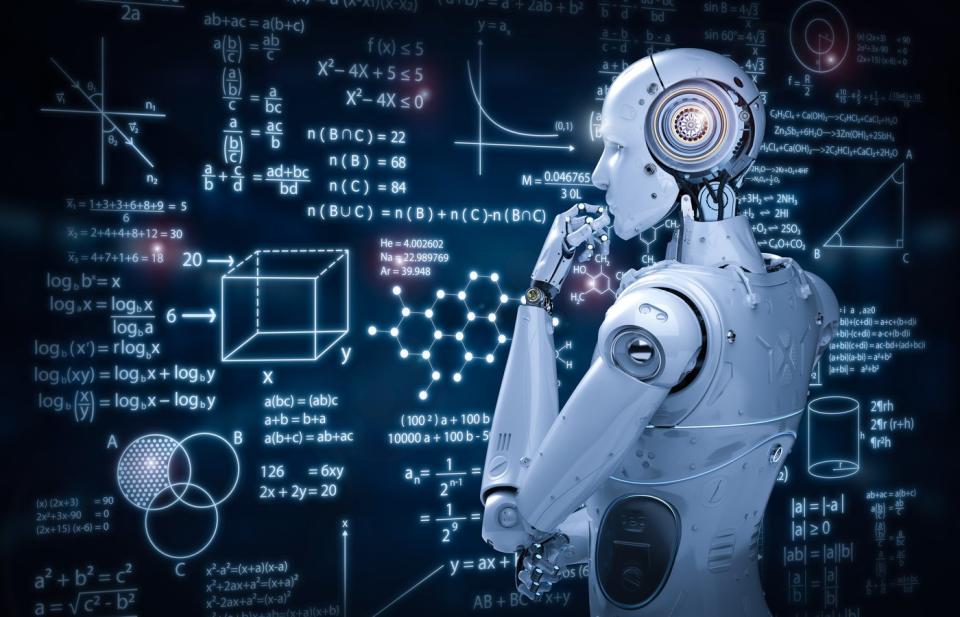Jensen Huang Just Said "Humanoid Robotics Should Be Right Around the Corner." Here's How Nvidia Could Benefit.
When it comes to artificial intelligence (AI), applications in machine learning, large language models, and compute networking garner most of the attention. But what investors may not realize is that use cases packaged around AI are evolving in real time.
One area that is getting particular interest is robotics. Indeed, companies such as Amazon and Alibaba have implemented robotics throughout their warehouses for years, creating efficiencies as it relates to packaging and logistics.
However, a rising number of the world's largest technology companies are increasingly focusing on the next frontier of robotics: humanoid bots. In late February, Nvidia's (NASDAQ: NVDA) CEO, Jensen Huang, said "humanoid robotics should be right around the corner" during a panel discussion about AI.
Let's dig into the rise of humanoid robotics and analyze the moves Nvidia is making in the space.
How does AI play a role in robotics?
Robotics is an interesting part of the overall AI narrative because it is uniquely positioned at the intersection of software and hardware. And believe it or not, there are lots of companies working to develop humanoid bots.
Two of the more recognized brands in robotics include Boston Dynamics and Tesla. Over the last year, Tesla has teased investors with previews of its humanoid bot Optimus -- which is planned to be used across the company's factories and assembly lines in the future.
One lesser-known robotics start-up called 1X hails from Norway. The company has raised $125 million in venture capital (VC) funding over the last year from high-profile investors including OpenAI, Samsung, and Tiger Global.

What is Nvidia doing with robotics?
About a week after Huang's comments regarding humanoid robots, Nvidia was cited as an investor in a $675 million funding round for start-up Figure AI. Nvidia joined Microsoft, OpenAI, Intel, and Amazon co-founder Jeff Bezos as investors.
Figure AI is developing humanoid robots that it plans to commercialize in industries such as manufacturing, warehousing, and retail. Figure AI's robots are being trained on generative AI models to learn how to perform basic tasks. The theme? The company is seeking to disrupt the workforce -- a market estimated to be worth $42 trillion annually.
How could Nvidia benefit?
Nvidia has incredibly lucrative opportunities in robotics. Currently, the company is primarily a hardware player -- developing high-performance semiconductors called graphics processing units (GPUs).
However, Nvidia is quietly expanding outside compute networking. Specifically, the company's enterprise software and services business is already operating at an annual revenue run rate of $1 billion. While this is impressive, it pales in comparison to Nvidia's data center business -- which generated $47 billion in sales last year.
Moreover, Nvidia is aggressively pursuing the enterprise software market through a combination of investments and strategic partnerships. The company is an investor in start-up Databricks, which largely competes with Palantir Technologies. Additionally, Nvidia also partners with Snowflake, helping bring AI capabilities to the company's data cloud platform.
Given Nvidia's distinctive position as both a hardware and software developer, the company has a massive opportunity to play an integral role in the development of humanoid robotics. I see the investment in Figure AI as a first step that could lead to further strategic partnerships and revenue opportunities across both sides of its business.
The important idea here is that Nvidia is subtly building an end-to-end AI solution -- spanning across both software and hardware. As such, I think the company is setting itself up for long-term sustained growth in a variety of areas in the overall AI realm.
My guess is that Huang will continue to drop breadcrumbs, alluding to AI-powered applications that he believes Nvidia can play a role in. Despite the run-up in the stock, I think now is a terrific time to scoop up some shares and plan to hold long term.
Should you invest $1,000 in Nvidia right now?
Before you buy stock in Nvidia, consider this:
The Motley Fool Stock Advisor analyst team just identified what they believe are the 10 best stocks for investors to buy now… and Nvidia wasn’t one of them. The 10 stocks that made the cut could produce monster returns in the coming years.
Stock Advisor provides investors with an easy-to-follow blueprint for success, including guidance on building a portfolio, regular updates from analysts, and two new stock picks each month. The Stock Advisor service has more than tripled the return of S&P 500 since 2002*.
*Stock Advisor returns as of March 11, 2024
John Mackey, former CEO of Whole Foods Market, an Amazon subsidiary, is a member of The Motley Fool’s board of directors. Adam Spatacco has positions in Amazon, Microsoft, Nvidia, Palantir Technologies, and Tesla. The Motley Fool has positions in and recommends Amazon, Microsoft, Nvidia, Palantir Technologies, Snowflake, and Tesla. The Motley Fool recommends Alibaba Group and Intel and recommends the following options: long January 2023 $57.50 calls on Intel, long January 2025 $45 calls on Intel, long January 2026 $395 calls on Microsoft, short January 2026 $405 calls on Microsoft, and short May 2024 $47 calls on Intel. The Motley Fool has a disclosure policy.
Jensen Huang Just Said "Humanoid Robotics Should Be Right Around the Corner." Here's How Nvidia Could Benefit. was originally published by The Motley Fool
